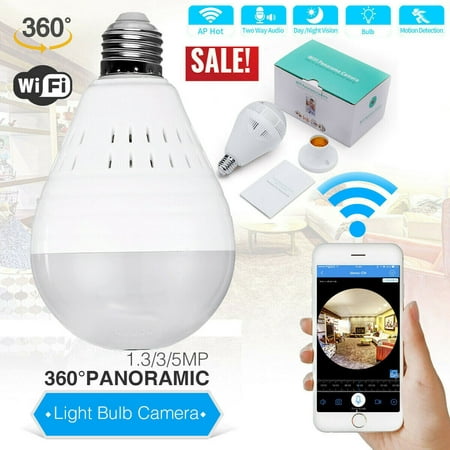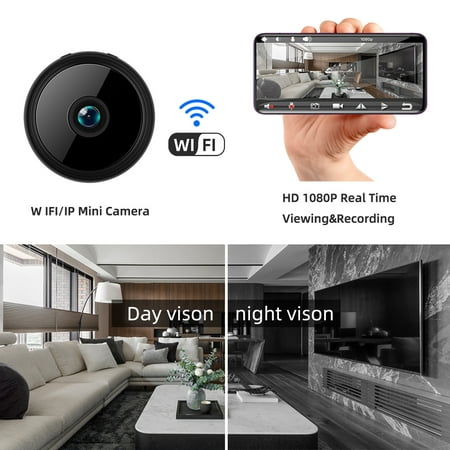HD 1080P 360° Panoramic WiFi IP Camera Light Bulb Home Security Lamp Cam
HD 1080P 360° Panoramic Wifi IP Camera Light Bulb Home Security Lamp Cam Feature: 360° Panoramic :featured with 360° surveillance, each attitude or your private home may be reached and totally underneath your manipulate 3-d Vision Experience: 3D vision experience makes the entirety in your home real and available Remote Monitoring: irrespective of in which you are, you’re able to remotely test your property circumstance via smartphone or pill if handiest there’s internect connection 128GB TF Card Supported: support as much as 128GB(Mini 16GB) micro SD card (TF card) TF card now not included Two-Way Communication: Built in speaker and microphone, it supports on the spot talk between APP and digicam cease Motion Detection & Intelligent Alert: Alarm will arise when motion detected and real-time notification may be sent to your phone or pill computer 50000 Hours’ LED Life Span: 3 x 1W LED Light gives you vivid illumination and works perfecly great like a not unusual bulb, but with longer lifestyles span as much as 50000hours Operation Tips: Scan QR code in the guide in APP keep (iOS) or Google play (Android), download & deploy iCSee app(1080P)/360eyes(960P) Specification: – Type: Spy WiFi Bulb Camera – Light bulb: E27 – Input voltage: AC 100-240V – Wireless widespread: 2.4G,IEEE802.11b/g/n – Network settings: AP mode/Station mode – Mobile WIFI video: HD/720P/960P/1080P/VGA – Storage media: Micro SD(64g Maximum) – Warning: E-mail/ FTP/ TF card/ Send a message to the server – Audio coding:ADPCM,two manner voice intercom – Lens: 1.29mm/ fisheye lens – Image sensor:HD 720PH/960PH/1080PH – View perspective :360°/one hundred eighty° – Frame rate: 25fps – Two-way voice: Support – Wifi:Support – Minimum illumination:0.01Lux@F2.zero,black/white zero.001Lux@F2.0 – Authentication:FCC,CE,ROHS – Material:ABS – Color: White Package Included: 1 x IP WiFi Bulb Camera 1 x User Manual












Reviews
There are no reviews yet.